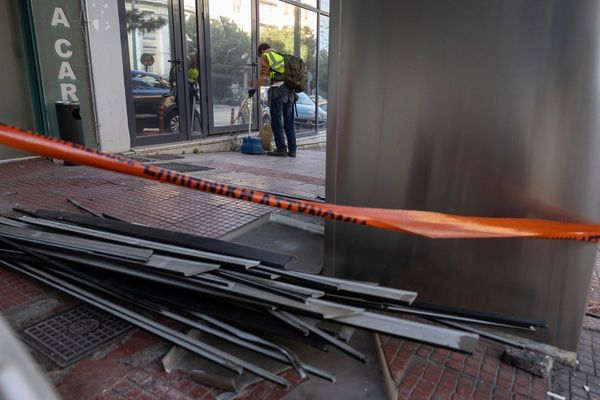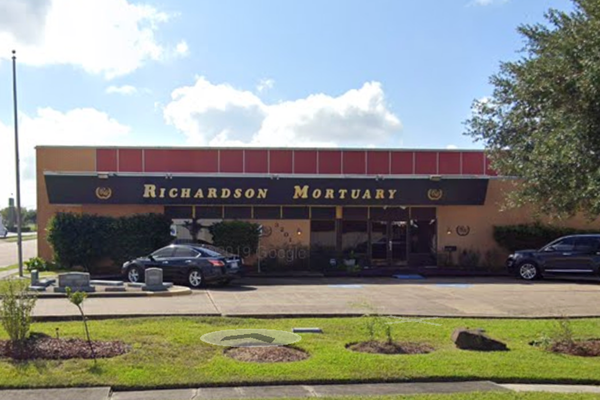CHICAGO — Not everyone liked the things that artist Claes Oldenburg made, which were gigantic sculptures of such commonplace items as a hamburger, a lipstick case, clothespin, ice cream cone, pretzel, ironing board, teddy bear, aspirin, and a very, very big bat in Chicago.
Before the bat was built, the late Tribune architecture critic Paul Gapp referred to the artist as “a veteran put-on man and poseur,” railing that he was “about to rip off taxpayers for a $100,000 baseball bat.” After it was built in 1977, my former colleague, Pulitzer Prize-winning architecture critic Blair Kamin, called it “ludicrous.”
But The New York Times looked on Oldenburg favorably. He died on July 18 in the Manhattan home/studio where he had long resided and part of the headline of his obituary in that newspaper noted that he “took humble objects to new heights” and a later story shouted that “Claes Oldenburg Was a Big Deal.”
His recent death brought back a personal memory of a chilly morning in 1977.
I was a young reporter standing across the street from 600 W. Madison St., trying to get people to comment on the large sculpture that loomed into the sky across the street, the 101-foot-tall “Batcolumn.”
The baseball bat was not his original idea. He first considered a big spoon. Then he thought about a fireplug. He had been commissioned in 1975 under the General Services Administration’s art-in-architecture program to place contemporary American art in new federal buildings. (The city’s first GSA artwork was Alexander Calder’s “Flamingo,” erected on Dearborn Street in 1974). The cost was $100,000, as Gapp testily noted.
Oldenburg said the bat was a monument “both to baseball and to the construction industry ... a celebration of steel construction as well as to the ambition and vigor Chicago likes to see in itself.”
I thought it a fine choice because, located on Madison Street, the city’s north/south divider, it symbolized the way in which baseball has ever divided this city. The area was then still in the process of erasing a part of its past, getting rid of what was our skid row, a stretch of cheap hotels, saloons and sad souls clinging to what was left of life.
The bat is still standing, the sunlight often playing off its open latticework, its crisscrossing diamond pattern reflected on the windows of the Harold Washington Social Security Center.
Oldenburg was not much of a baseball fan — “I like the game,” he told a reporter in 1977, “though I haven’t been to a game since I was 11″ — but he was a Chicagoan. Born in 1929 in Sweden, he came here in 1936 when his diplomat father, Gosta, was appointed the Swedish consul general in Chicago. And here he grew up.
It is impossible to know how those youthful years here influenced his career but this was a place of superlatives and the birthplace of the skyscraper. A visual feast.
He lived first on sedate Crilly Court in Old Town with his father, mother Sigrid (a former singer and visual artist) and a younger brother named Richard, who would be the director of the Museum of Modern Art and later Chairman of Sotheby’s, the international auction corporation.
The family later moved to an apartment on Walton Street, with a French poodle named Tessie. It was filled with art and antiques and was, a Tribune reporter wrote, “a sanctuary of graceful and comfortable living.” His parents were renowned for throwing “charming, old-fashioned Swedish Christmas celebrations” at their homes.
After graduating from the Latin School in 1946, Claes studied literature and art history at Yale University. Then he came back here to work at the City News Bureau, the famously colorful training ground (i.e. boot camp) for such future journalists as Mike Royko, Richard Christiansen, Pam Zekman, Bernie Judge, Charles MacArthur and my father, Herman Kogan. It also employed some who chose different professions, such as writer Kurt Vonnegut, actor Melvin Douglas and Oldenburg.
After a couple of years there, he attended the School of the Art Institute. He had a studio on North Avenue for a time and the first recorded sales of his work took place at the 57th Street Art Fair where, the Tribune reported, he sold five items for a total price of $25. Soon he was living in New York, where he would become famous.
He was ever eager to share his ideas about urban art, once saying, “A graffiti-decorated train is like a magnificent South American flower whose colors put new life into the grayness of the city.”
And he often shared impressions of our city, telling the Tribune in 1972, “Chicago is more serene [than New York City] because of the lake and the prairies. It feels quiet and overwhelming. The large amounts of space give you a strange feeling of nostalgia. The streets run to infinity.”
Oldenburg was 93 when he died and there is much more you can learn from reading his obituary. You will read of his two influential wives, Patty Mucha and Coosje van Bruggen, his many works, and the controversy and varying opinions that attended his art.
The NYT wrote that he “revolutionized our idea of what public art could be.”
So, there I was on that chilly 1977 day looking at the “Batcolumn.”
I stopped one guy, who had obviously been a recent and well-served customer of one of the neighborhood’s saloons.
“Do you have anything to say about that sculpture?” I asked.
The man grunted and coughed.
“Want to say something?” I asked.
“I have something to say,” said the man.
“OK, then,” I said, pencil poised against paper.
“Give me a dollar,” said the man. “Give me a dollar and I could build something better than that.”
———







